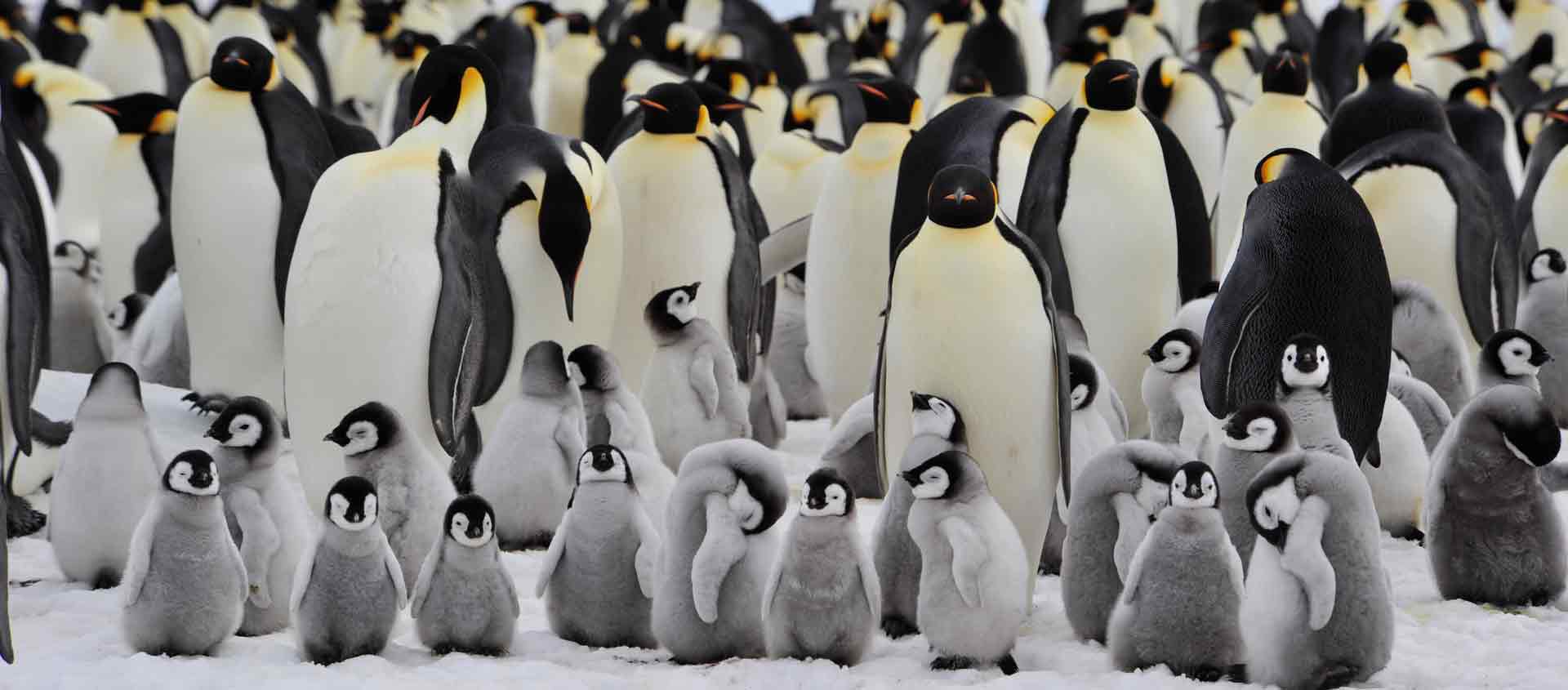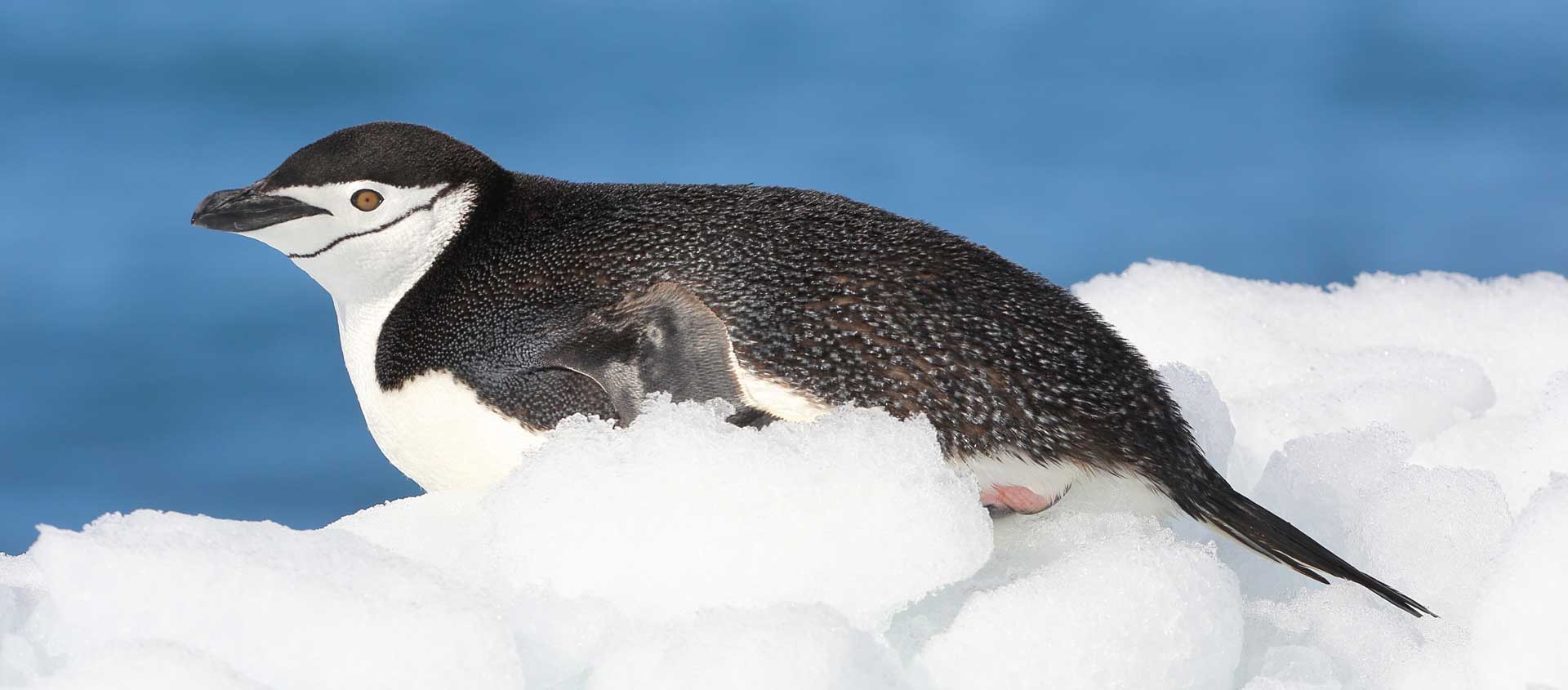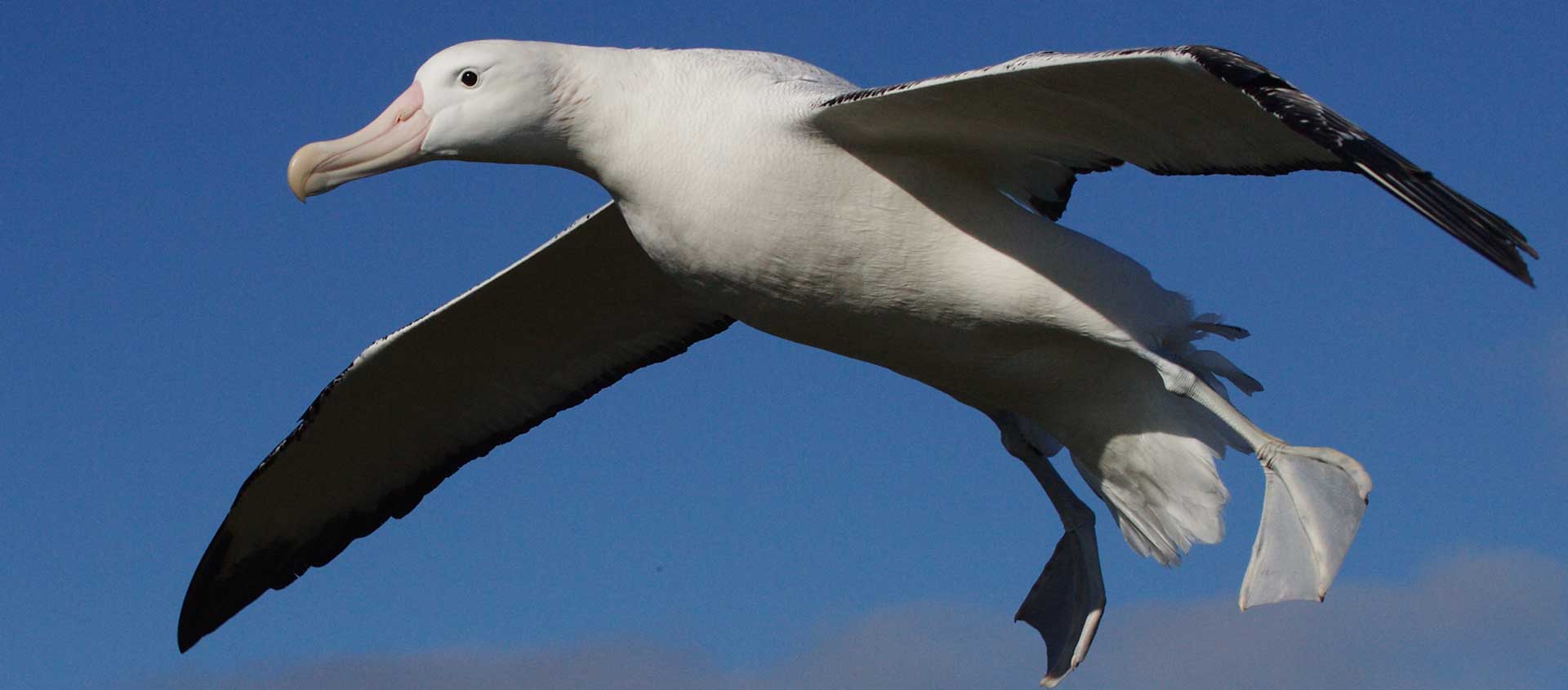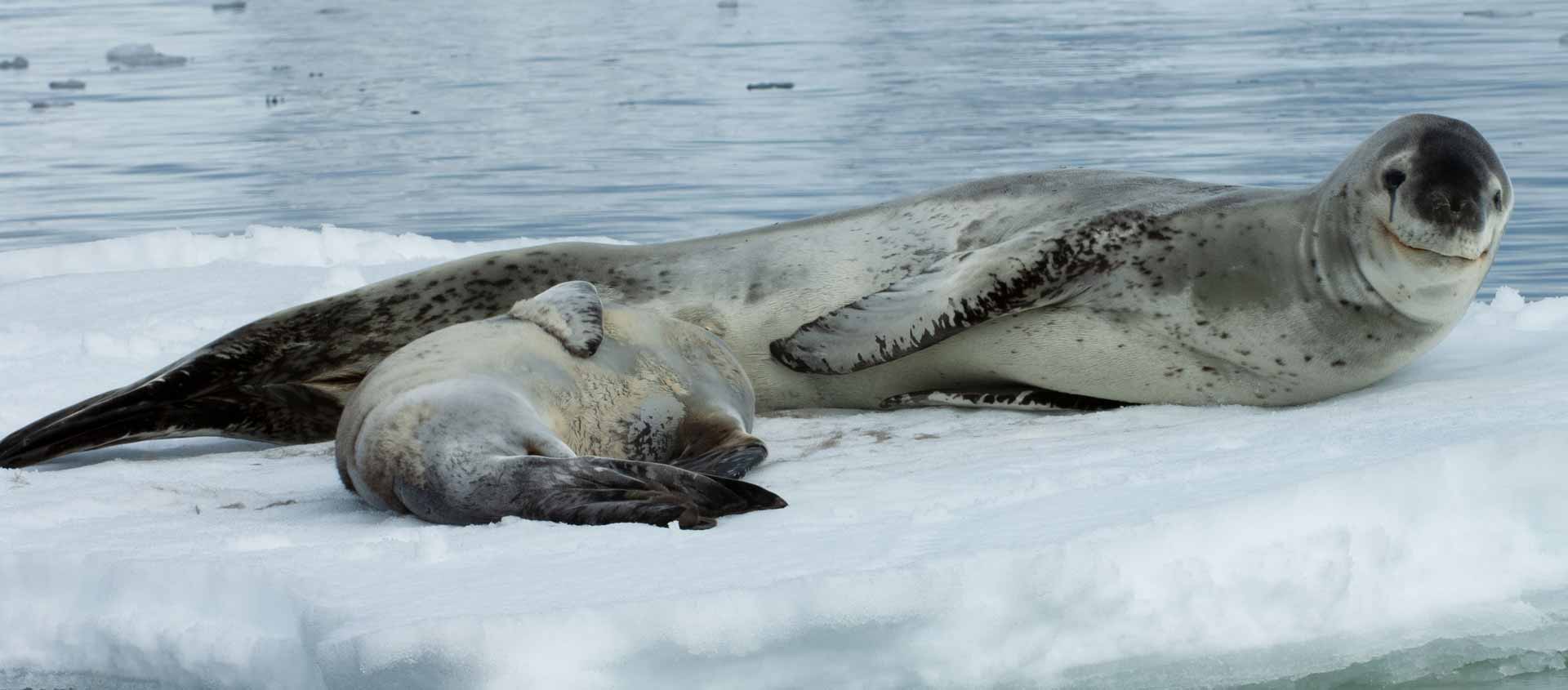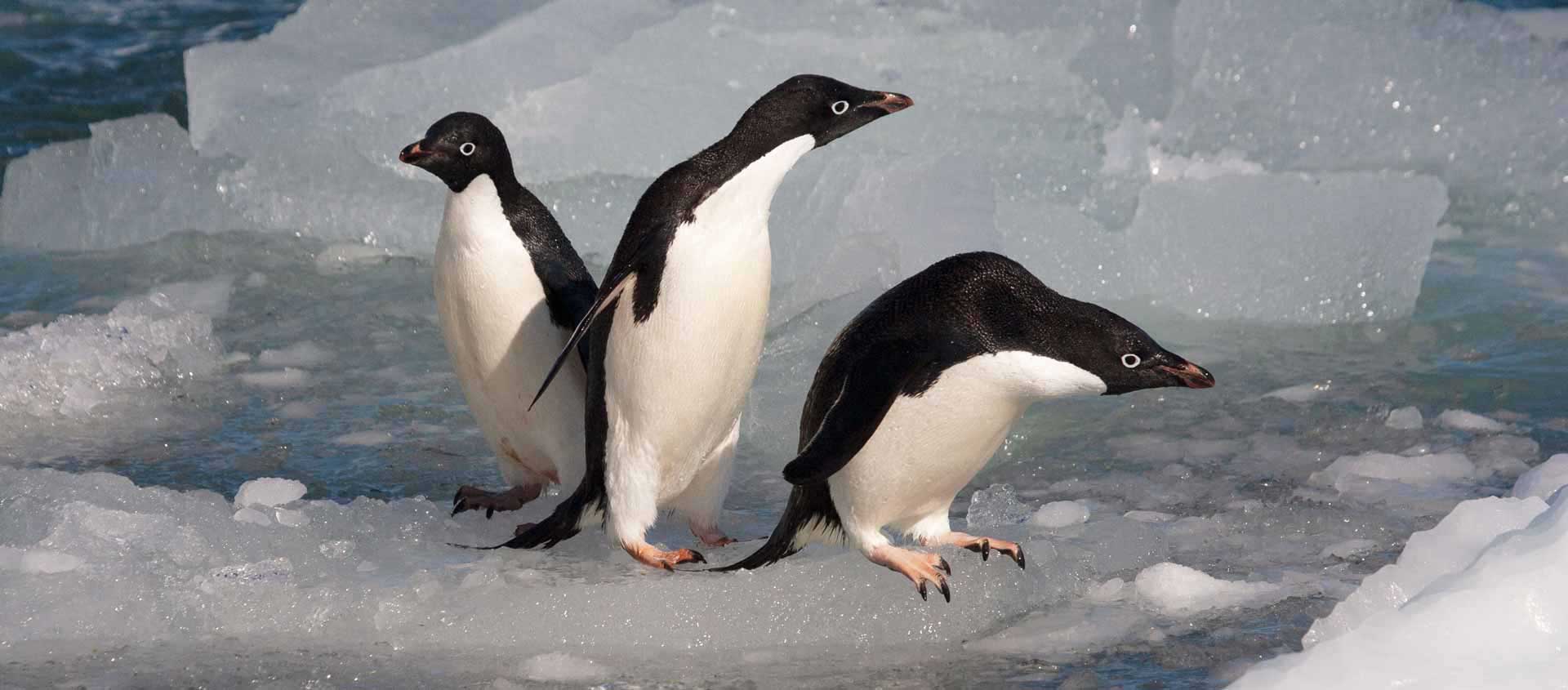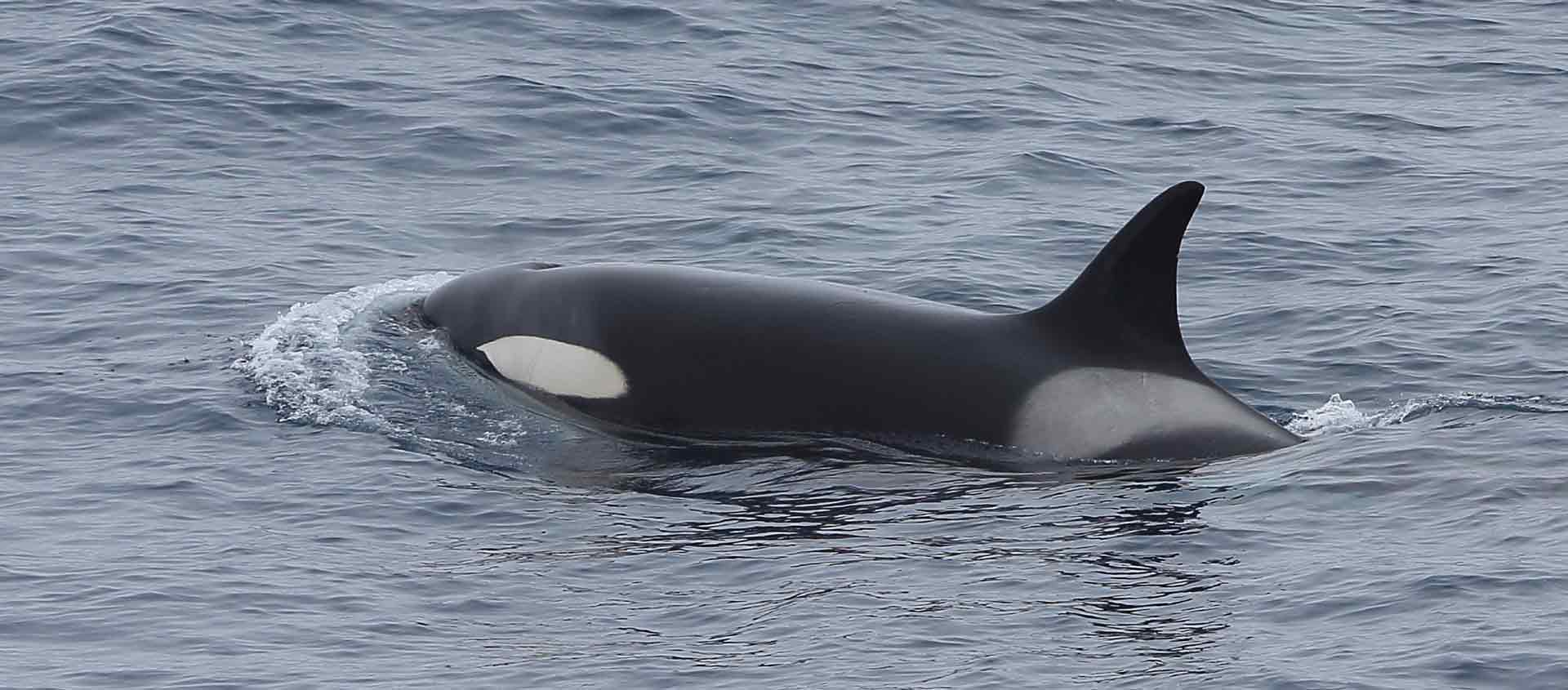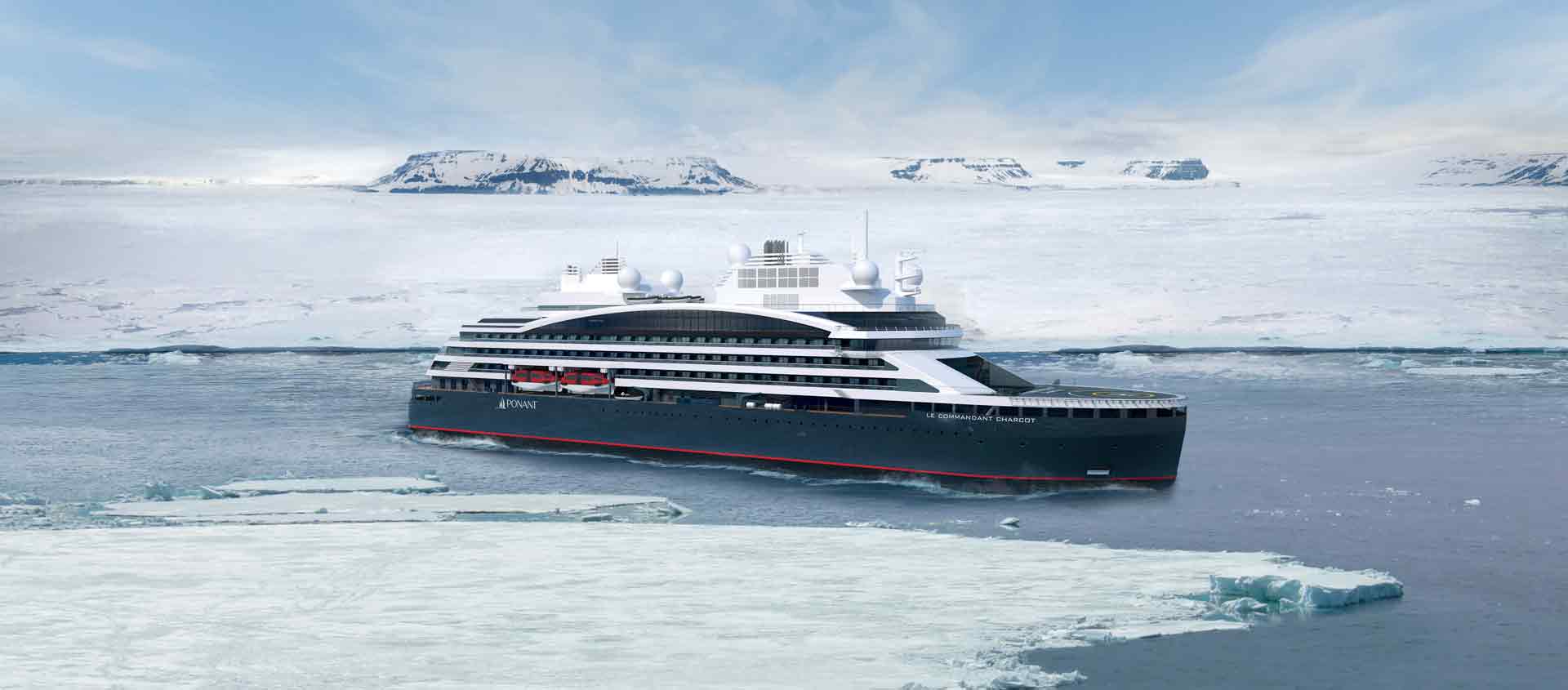Emperor Penguins of the Bellingshausen Sea
onboard Le Commandant Charcot
Emperor Penguin Cruise South of the Antarctic Circle
Jean-Baptiste Charcot destroyed his beloved ship and nearly lost his life exploring Antarctica. Yet, after his last voyage in 1910, he yearned to get back: “Why, then, do we feel this strange attraction…we forget the mental and physical hardships, and want nothing more than to return?” Retrace Charcot’s path on a 20-day Emperor Penguin cruise south of the Antarctic Circle aboard the new hybrid electric icebreaker, Le Commandant Charcot. This is a rare opportunity to be among the few to experience the haunting landscapes and ethereal beauty of the Bellingshausen Sea, west of the Antarctic Peninsula. Wildlife abounds here with Leopard, Crabeater and Weddell Seals, and, of course, Antarctica’s foremost ambassadors, the penguins. Walk among the royalty of the Southern Ocean, the majestic Emperor Penguin, including visits to breeding penguins complete with crèches of chicks, arguably the world’s most endearing baby bird. Join the handful of people who have set foot on this largely unseen part of Antarctica and experience the soul-stirring allure that kept explorers, such as Charcot, coming back season after season.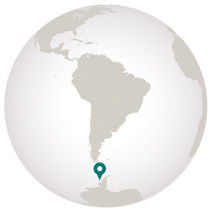
Destinations
- Travel by Air
- Travel by Road
- Travel by Boat
- Travel by Bullet Train
- Travel by Rail
- Travel by Dog Sled
-
Sunday, October 31: Arrive Santiago, Chile
Upon arrival in Santiago you will be met and transferred to your hotel. Explore this stately capital city at your leisure, taking in the museums, grand architecture and pedestrian malls of the Centro, and the gorgeous hillside parks that dot the urban landscape. Enjoy a drink and snack at one of the many sidewalk eateries and cafés of Barrios Brasil, Lastarria and Bellavista. This evening, meet your fellow travelers and expedition team over drinks and a welcome dinner at your hotel.
-
Monday, November 1: Santiago / Puerto Montt / Embark Le Commandant Charcot
After breakfast, head to the airport for a charter flight due south, to the capital of Chile’s Lake District, Puerto Montt, perched on the northern end of Reloncaví Sound. Tour the town, seeing relics of its German colonial past at the Plaza de Armas and neoclassical cathedral. Enjoy lunch at one of Puerto Montt’s many world-class restaurants, before embarking your home away from home for the next 18 nights, Le Commandant Charcot. Settle into your cabin and be sure to be on deck as you set out into the sound and toast to the voyage ahead. Natural history buffs will be on the lookout for Blue Whales, Magellanic Penguins, and the enigmatic Pincoya Storm-Petrel, a species discovered by Peter Harrison as recently as 2011. Dinner and overnight aboard Le Commandant Charcot.
-
Tuesday–Thursday, November 2–4: At Sea
Le Commandant Charcot is the world’s first luxury polar exploration vessel and the first PC2-class polar cruise ship, capable of sailing into the very heart of the ice, on frozen waters that are usually inaccessible to ordinary ships. Become acquainted with this agile 500-foot hybrid electric ice breaker as you navigate toward the Southern Ocean. Attend lectures that will introduce you to the Antarctic, its explorers and the wildlife, with a special emphasis on the Bellingshausen Sea.
As you head south into ever-higher latitudes, your daily wildlife sightings will be constantly changing. Off the South American mainland, expect a plethora of albatrosses ranging from Wandering and Royal Albatrosses to Buller’s and Black-browed. Further south Pintado Petrels and Southern Fulmars will be your constant companions. Be on deck with your naturalists to learn their fascinating life histories—many live to be 30 or more years of age and never leave Antarctica.
-
Friday, November 5: Crossing the Antarctic Circle
Most ship visits to Antarctica are well north of the Antarctic Circle; on this voyage, however, “the Crossing of the Circle” is of paramount importance. Weather permitting, you will cross the renowned Antarctic Polar Circle today, located along 66°33’ south of the Equator. This iconic line demarcates the point from which it is possible to view the midnight sun during the December solstice. Within this circle, the sun remains above the horizon for 24 consecutive hours at least once a year.
-
Saturday, November 6: At Sea
Spend as much time on deck as possible; ice will be all around, from brash and floe ice to towering spires and monster superbergs, some literally miles long. This is the home of Snow and Antarctic Petrels, two species that are almost never seen away from Antarctica. As you press ever deeper into the ice, your eyes now search for the world’s most difficult-to-see bird species, the resplendent Emperor Penguin, largest of all penguins and heaviest of all seabirds.
-
Sunday–Monday, November 7-15: Bellingshausen Sea
NOTE: In the spirit of expedition travel, flexibility is key, and your expedition leader will determine the best course each day. Taking into account the weather, ice conditions and wildlife activity, we hope to spend time at the following locations:
Charcot Island
In 1910, Jean-Baptiste Charcot set his sights on this small island, trying numerous times to approach it. He was never able to get closer than 40 miles due to the thick sea ice in the area. With its frequent low-pressure systems, regular cloud cover, and near-total ice covering, Charcot retains its mystery to this day. The ice lets up over a few miles in the far northwest of the island, giving way to rocky outcroppings, which are home to throngs of checkered Pintado Petrels and dashing Southern Fulmars. You’ll also keep watch for Chinstrap and Adélie Penguins, and your first South Polar Skuas, the only bird species to have reached the South Pole. Very few people have landed on the island due to ice coverage, but in recent years, the ice in the narrowest part of Wilkins Sound has been breaking up, thus officially detaching Charcot from its larger neighbor, Alexander Island, lying 30 miles away.Peter I Island (Norwegian Territory)
Due west of Charcot lies the legendary Peter I Island, discovered in 1821 by the Russian explorer Fabian Gottlieb von Bellingshausen, who named it in honor of Peter the Great. The island is a breeding ground for Southern Fulmars and Antarctic Terns. Adélie and Chinstrap Penguins have also been spotted here. With about 95% of its surface covered by ice, this volcanic island, whose highest peak reaches 5,300 feet, is protected by ice cliffs some 130 feet tall, making any approach difficult. Weather permitting, you may attempt to be one of the few hundred souls who have ever set foot here.English Coast
Located on the west coast of Palmer Land, which makes up the southern half of the Antarctic Peninsula, the English Coast is home to a large rookery of Emperor Penguins. The penguins are accessible by foot, one of the rare places they can be reached without a helicopter. Make the challenging (but relatively short) trek over a magnificent desert of pack ice, and you will find yourself among these famed and awe-inspiring creatures – the largest of all penguin species. This time of year, as winter gradually gives way to the austral spring, the weeks-old chicks are just beginning to find their independence and gather in immense “crèches.” Watch them huddle together, braving the harsh conditions. It is a rare, moving and intense experience, one you will not soon forget.Marguerite Bay
Named by Charcot in honor of his second wife, this bay is one of the most beautiful regions in Antarctica, with magnificent icebergs scattered as far as the eye can see. Minke and Humpback Whales and Orcas frequent its intense blue waters, and Weddell and Crabeater Seals are often found hauled out to rest, along with predatory Leopard Seals and the assertive Antarctic Fur Seal. Adélie Penguins can be spotted on the sea ice. Here, you can see mountainous Adelaide Island to the north, the Fallieres Coast to the east, and Alexander Island to the south.Stonington Island
Home to former US and British research bases, the small island of Stonington lies in the northeastern part of Marguerite Bay. Several dog sledge expeditions started here, enabling researchers to map a significant portion of the Antarctic Peninsula. Vestiges of their two-story steel-framed buildings are still visible. The island is now an important breeding ground for Antarctic Terns and South Polar Skuas.Pourquoi Pas Island
Named in the 1930s in honor of Jean-Baptiste Charcot’s ship, this small island in the north of Marguerite Bay is known for its tight fjords and lofty, glacier-crowded mountains. Conditions permitting, take a Zodiac ashore and observe an Adélie Penguin colony up close. Adélies are the earliest of Antarctica’s springtime-nesting species and early November is the perfect time for a visit. Neighbors will be stealing stones from each others’ nests, pairs will be reuniting after the long winter, young birds will be looking for mates—all resulting in a noisy bedlam of frenetic energy as the penguins begin yet another breeding season.The Gullet
Between Adelaide Island and Graham Land—the northern portion of the Antarctic Peninsula— this narrow channel leads north out of Marguerite Bay and offers jaw-droppingly beautiful scenery, reminiscent of an ice palace, with immaculate white walls on each side reflected in the mirror-like waters. This passage was first explored by Charcot in 1909, and it is here that some of the first subaquatic images of the Antarctic were shot during Philippe Cousteau’s four-month expedition to Antarctica in 1972. This is an excellent area to look for Emperor Penguins on ice and bands of Adélie Penguins, as they commute between colonies and feeding grounds.Detaille Island
Behold this tiny, sheltered island in Crystal Sound. There’s a small rookery of Adélie Penguins living here, but the real attraction of Detaille is its abandoned British station. Base W was operational between 1956 and 1959, after which it was hurriedly evacuated when its supply ship became blocked by ice. The personnel had to leave on foot across the pack ice, abandoning most of their gear. Base W is now an official Antarctic Historic Site, open for visitors. The living quarters stand exactly as they were left—scientific equipment, books, clothing, even tins of food still lie about. The station is a veritable time capsule of mid-century life at an Antarctic research station. -
Tuesday, November 16: At Sea
This will be your last day with ice and those that call it home. Be on deck to search for Snow and Antarctic Petrels that use icebergs as loafing and roosting stations. Sharp-eyed observers will also see sparrow-sized Wilson’s Storm-Petrels, birds that can fit in the palm of your hand, yet are trans equatorial migrants capable of flying many thousands of miles each year. Over cocktails, your lecture team will recap the events of the past days and share images and stories of your Antarctic adventure.
-
Wednesday & Thursday, November 17 & 18: Drake Passage
Spend the next two days crossing the Drake Passage. Here lies the Antarctic Convergence Zone, formed by the confluence of north-flowing cold waters and warmer sub-Antarctic seas. Not only do sea conditions converge here, but avian life does too. Wandering, Grey-headed, Black-browed and Light-mantled Sooty Albatrosses, Cape Pigeons, Southern Fulmars, Wilson’s Storm-Petrels, Blue and Antarctic Petrels may all be seen floating playfully in the wind around the ship.
-
Friday, November 19: Ushuaia, Argentina / Disembark Le Commandant Charcot / Santiago / Depart
Nicknamed “El Fin del Mundo” by Argentinians, Ushuaia claims to be the southernmost city in the world, and is a true sight to behold, nestled in a crook where the Andes plunge into the sea. It is a fittingly dramatic place to end your Antarctic adventure. Disembark the ship and transfer to the airport for your charter flight to Santiago, then on to your international flights home.
Have a question? Call us at 206.669.9272 / 800.861.6425. Prefer email?
Get in TouchA Year in the Life of an Emperor Penguin
In April, at the end of the Antarctic summer, Emperor Penguins will begin their march to their traditional breeding grounds—a journey across the frozen ice that can be as long as 90 miles. Unlike most bird species, the Emperor Penguin lays its eggs during the harsh Antarctic winter months of May or June. Once the female lays her egg, she delicately transfers it to the male. He must carefully balance the egg on his feet for up to 75 days, covering it with a loose fold of abdominal skin to keep it warm. Almost immediately, the female joins other females from the colony to make their way back to the sea to nourish themselves and bring back food for their newborn chicks.The female returns in August, just before the egg hatches, locating her mate by his particular call. Now the male will head for the sea. Having fasted throughout the courtship, nesting, and incubation period, he can lose up to 45% of his body weight. Starting in November, the chicks will begin to grow their protective feathers, replacing their down, and the parents will stop feeding them. Their trek back to the sea begins in December, and the cycle will start all over again.

